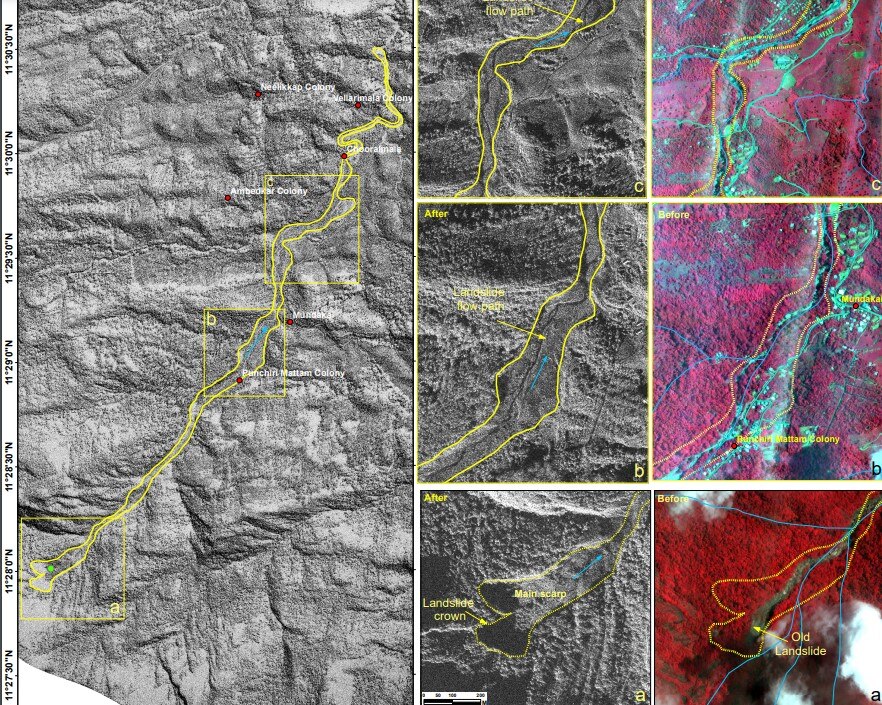ISRO's Before And After Images Show Devastation In Wayanad After Landslides
The before and after images show that about 86,000 square metres of land slipped and the debris flowed for about 8 kilometres along the Iruvaiphuzha river.

Wayanad Landslides: Indian satellites have captured high-resolution images that show the widespread damage and devastation caused by landslides in Kerala's Wayanad. Heavy rains in the disaster-stricken Wayanad have wreaked havoc in the region. Over 250 people have died, and around 240 are still missing even as the rescue works are ongoing.
The before and after images show that about 86,000 square metres of land slipped and the debris flowed for about 8 kilometres along the Iruvaiphuzha river. A report by the Indian Space Research Organisation also provides evidence of an old landslide at the same location.
The National Remote Sensing Center, Hyderabad which is a part of the Indian Space Research Organization (ISRO), deployed its Cartosat-3 optical satellite and the RISAT satellite, which has the capability of seeing through cloud cover. According to the space agency, the landslide was initiated at an altitude of 1550 metres above sea level.
The report reveals that there is evidence of an old landslide at the same location. A 2023 'Landslide Atlas of India' prepared by ISRO had placed the Wayanad region as vulnerable to landslides. ISRO satellite images show widespread devastation at the Wayanad landslide.
Almost 86,000 square metres of land slipped, which led to a landslide approximately five times the size of the Rashtrapati Bhawan. The debris flowed for almost 8 kilometres downstream, which swept away towns and settlements.
The ISRO has said that there is evidence of an old landslide at the same location. The National Remote Sensing Center made use of the Cartosat-3 satellite and the RISAT satellite to see through cloud cover.
According to the NRSC report, "a major debris flow was triggered by heavy rainfall in and around the Chooralmala town of Wayanad District in Kerala state of India".
Very high-resolution RISAT SAR images of July 31, 2024 show the entire extent of the debris flow from the crown to end of the runout zone. The flow has an approximate length of 8 Kilometres. The crown zone is a reactivation of an older landslide. The size of the main scarp of the landslide is 86,000 square meters.
The debris flow has widened the course of the Iruvaniphuza River causing breach of its banks. Houses and other infrastructures located along the banks have sustained damage due to the debris flow, A 3D rendition of the crown of the landslide illustrates that a major section of the hill slope has been affected.
According to the ISRO report, the areal extent of the landslide is 86,000 sq.m and the crown is located at an approximate elevation of approximately 1,550 m above MSL.
The space agency compiled a "Landslide Atlas of India" which documents the 80,000 landslides that have occurred over 20 years and lists landslides from Puthumala, Wayanad district, and large parts of Kerala are marked red as being prone to landslides.
Related Video
Indore Water Crisis: 15 Dead After Drinking Contaminated Water, Situation Still Critical





































